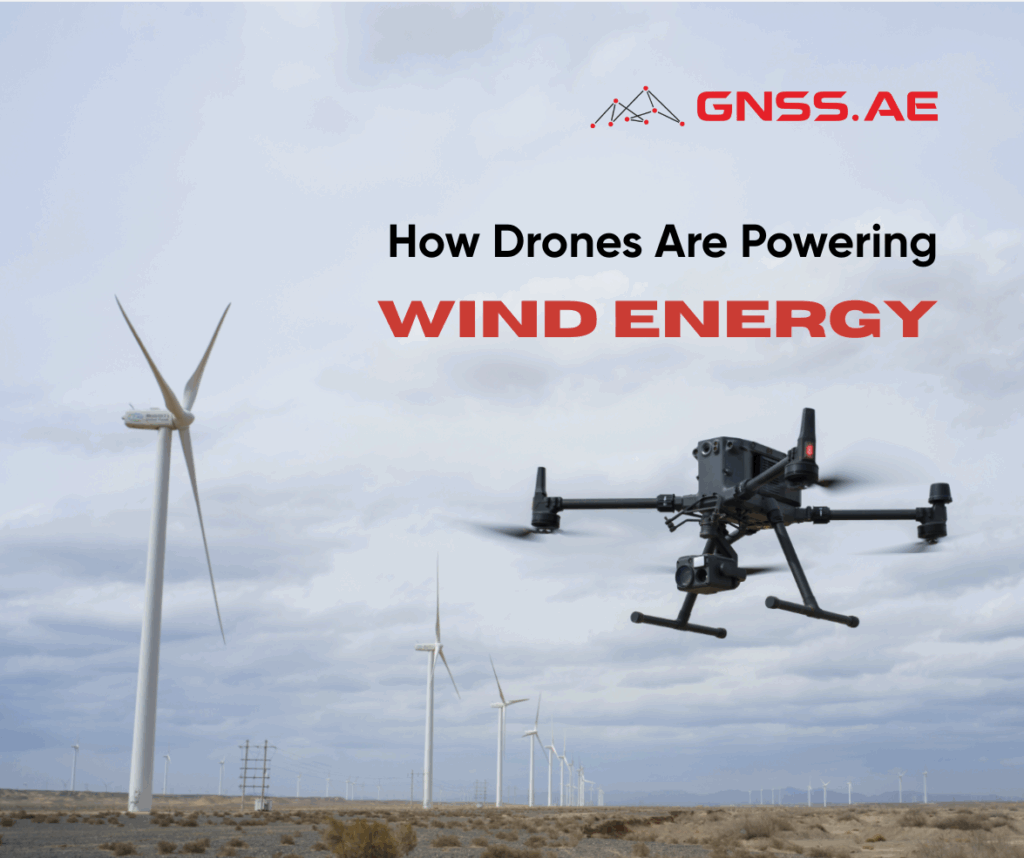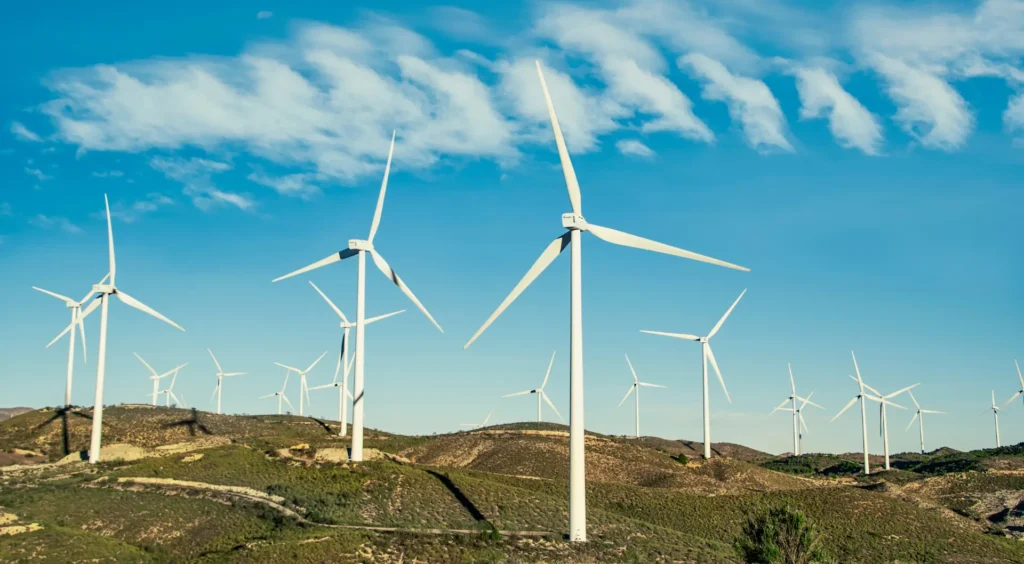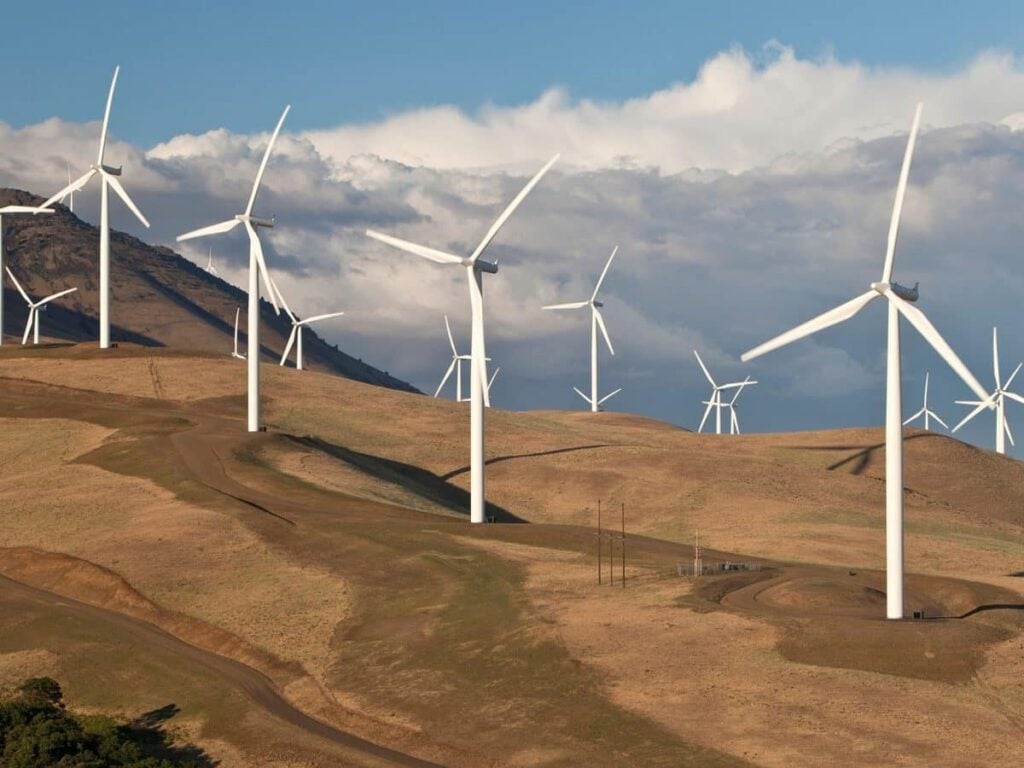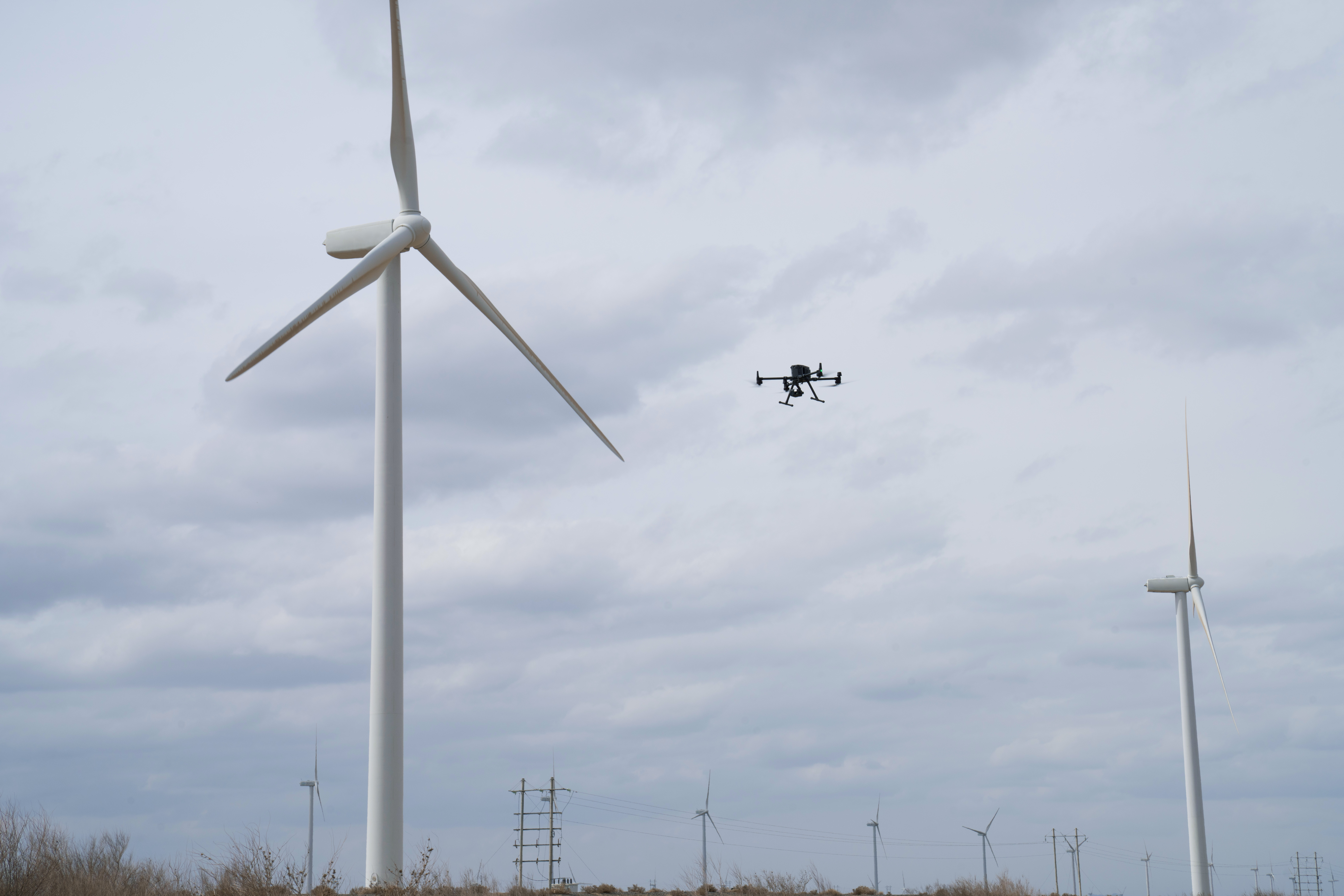
Wind energy is undergoing a transformative shift, powered by technological advancements and bold regional initiatives. From the heights of turbine towers to expansive wind farms across the Middle East and North Africa (MENA), drones and strategic collaborations are shaping a new era of maintenance, innovation, and energy sustainability.

Few sectors benefit from drone technology as directly as wind energy. Traditionally, wind turbine maintenance required specialized crews to scale great heights and endure dangerous conditions. Today, drones are changing that reality—particularly in remote offshore sites—by offering fast, cost-effective, and safe alternatives for inspection and monitoring.
Drones are reducing the high operational costs associated with wind turbine maintenance. Offshore farms, in particular, face challenges such as expensive transportation and labor. Drones offer remote capabilities that cut these expenses and minimize safety risks, as workers avoid hazardous climbs. In an industry where 36% of fatalities result from falls, drone inspections could play a vital role in improving worker safety.
Recent advancements such as the DJI Dock 3 provide a versatile and efficient solution for enterprise operations, delivering seamless aerial coverage under virtually any conditions. With its robust build, intelligent automation, and adaptability, DJI Dock 3 enables fully remote inspections of wind turbines, solar farms, and oil pipelines, with intelligent data analysis that enhances decision-making for the energy sector. By supporting unattended drone missions, DJI Dock 3 significantly reduces operational costs and increases the frequency and precision of inspections—making it particularly valuable for remote or offshore wind farms where safety and consistency are critical.
Modern inspection drones are equipped to access and assess all wind turbine components—swiftly and safely. With copters offering obstacle awareness, advanced stabilization, and navigation, they can perform close-proximity inspections even in wind gusts up to 12–16 m/s, essential for offshore environments. Long battery life, autonomous flight modes, and extended transmission ranges streamline operations, while payload flexibility extends functionality.
Drones can carry a range of inspection payloads, including:
High-resolution RGB cameras for visual inspections
Thermal and infrared sensors for temperature monitoring
Ultrasonic transducers and multispectral sensors for advanced diagnostics
These tools enable rich, real-time data collection across four key inspection scenarios:
Routine and post-weather event inspections use high-resolution imagery to detect issues such as:
Vibration cancellation and stabilization tech allow accurate capture under turbulent conditions.
Drone-mounted thermal cameras detect abnormal heat signatures in components such as:
These inspections are critical for hot climates and lightning-prone regions, preventing degradation and fire risk. Visual data can be reviewed and annotated in specialized software.
Equipped with advanced imaging and data collection tools, drones complete inspections in a fraction of the time. However, this efficiency raises concerns about long-term skill development. As automation handles diagnostics, workers may miss out on valuable hands-on experience. While digital literacy and drone piloting skills are becoming essential, companies must strike a balance to avoid eroding foundational technical knowledge.
Despite their advantages, drones come with limitations. Data management systems must evolve to process the vast volumes of information drones collect. Regulatory barriers—such as permits and operator certifications—can slow deployment, especially near urban areas. Connectivity issues and battery life constraints also require proactive planning and backup systems to ensure mission success.
The integration of drones in wind energy coincides with a broader shift across the MENA region, where wind power is emerging as a strategic pillar of sustainability. A defining example is Masdar’s 10GW wind project in Egypt, a landmark initiative serving as both a regional catalyst and a global benchmark for wind development.

Masdar, the UAE’s clean energy leader, along with Infinity Power—the largest African renewable energy developer—and Hassan Allam Utilities, a sustainable infrastructure investment platform, have signed a Land Access Agreement with the Egyptian Government for the development of the 10GW onshore wind farm. According to the press release published by Masdar (Masdar, 2024), the project will span a 3,025 km² area in West Suhag and is set to be one of the largest wind farms in the world, with a project value exceeding US$10 billion.
The agreement permits the consortium to begin crucial development studies, including resource measurement campaigns, geotechnical and topographic surveys, and environmental assessments to ensure minimal ecological impact. These studies are essential for progressing toward construction and are expected to result in job creation, local hiring commitments, and community support initiatives, all while promoting environmental stewardship.
The project is expected to produce 47,790 GWh of clean energy annually, offsetting 23.8 million tonnes of CO₂ emissions—equivalent to nearly 9% of Egypt’s annual carbon output. Additionally, it will help Egypt meet its target of generating 42% of its energy from renewables by 2030 and save approximately US$5 billion in natural gas costs per year.
Countries across MENA are using this success as a foundation to pursue similar investments, signaling a collaborative era of technological adoption and renewable energy development.
As global attention turns to climate action, projects like Masdar’s position the MENA region at the forefront of the conversation. With COP28 emphasizing renewable energy adoption, the region is stepping into a leadership role with real-world, scalable solutions.

The synergy between drone technology and wind energy is enhancing the sector’s competitiveness.
According to the latest study by Market Size and Trends, the drones for wind turbines market in the Middle East and Africa is experiencing significant growth, driven by government-led diversification initiatives and increased spending on technology. These trends support greater adoption of drone solutions in energy management, positioning the region as a leader in renewable energy innovation.
The expansion of wind energy is driving economic, social, and environmental transformation:
The convergence of drone innovation and strategic wind investments is reshaping global energy systems. From operational efficiencies on turbine towers to groundbreaking regional initiatives like Egypt’s 10GW wind farm, the momentum is unmistakable. As the MENA region steps into a leadership role in renewable energy, and as drones redefine what’s possible in wind farm maintenance, a new era is taking shape—one where innovation, safety, and sustainability work hand in hand to power the future.